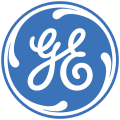References
- 1 2 GE Transportation - Engines (
- ↑ GE Transportation - Genesis Series 2 Dual Mode Locomotive
- ↑ GE Transportation - AC4400 Locomotive
- ↑ - General Electric ES44C4 Datasheet, www.thedieselshop.us
- ↑ GE Transportation - Approaching the next regulatory level
- 1 2 3 "GE Transportation - The Evolution Series Locomotives". Archived from the original on 2013-01-25. Retrieved 2010-09-27.
- ↑ GE Transportation - AC6000 Locomotive
- ↑ "GE Transportation - L250 Marine Engines". Archived from the original on 2011-08-19. Retrieved 2010-09-27.
- ↑ GE Transportation - PowerHaul Series Locomotives
- ↑ - GE Infrastructure Marine
- ↑ "GE Transportation - V228 Marine Engine". Archived from the original on 2011-08-20. Retrieved 2010-09-27.
- ↑ "GE Transportation - V250 Marine Engine". Archived from the original on 2011-08-20. Retrieved 2010-09-27.
- ↑ GE Distributed Power - Jenbacher Type 2 Archived 2009-08-13 at the Wayback Machine
- ↑ GE Distributed Power - Jenbacher Type 3 Archived 2009-08-20 at the Wayback Machine
- ↑ GE Distributed Power - Jenbacher Type 4 Archived 2009-08-20 at the Wayback Machine
- ↑ GE Distributed Power - Jenbacher Type 6 Archived 2009-08-20 at the Wayback Machine
- ↑ GE Distributed Power - Jenbacher J624 GS Archived 2009-07-16 at the Wayback Machine
- ↑ GE Distributed Power - Jenbacher J920 FleXtra
